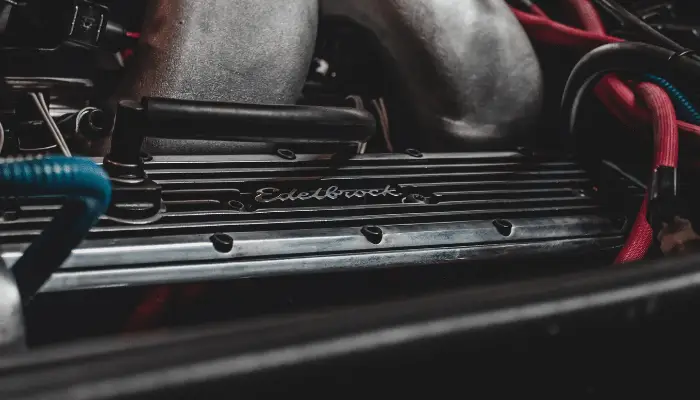- How to Clean Car Carpets Quickly (Without An Extractor) - July 10, 2024
- Can You Touch Up Clear Coat On A Car? Yes and No (Here’s Why) - November 25, 2023
- How To Wax A Car By Hand (For Beginners) - November 14, 2023
Last Updated on January 19, 2025 by Nate Schnell
From years of experience in the automotive industry, I’ve learned that understanding the function of a component is crucial to proper testing and diagnosis. This is especially true when working with the purge valve, an essential part of a vehicle’s Evaporative Emission Control System (EVAP). This guide will take you through multiple methods for testing purge valves, identifying symptoms of failure, and addressing related concerns effectively.
Understanding the Purge Valve
The purge valve is a critical component of the EVAP system, responsible for preventing harmful fuel vapors from escaping into the atmosphere. It operates by allowing stored vapors from the charcoal canister to be drawn into the engine for combustion at appropriate times. A malfunctioning purge valve can lead to performance issues, increased emissions, and potential damage to your vehicle.
How to Test a Purge Valve by Hand
Testing by hand is a simple way to assess the purge valve’s functionality:
- Locate the Purge Valve: Typically found near the engine or intake manifold.
- Disconnect the Hose: Remove the hose linking the valve to the charcoal canister.
- Start the Engine: Check for vacuum at the disconnected port. No vacuum should be present when the engine is cold, as the valve should remain closed.
- Warm the Engine: When the engine reaches operating temperature, the purge valve should open, creating a vacuum at the port.
- Evaluate Results: If vacuum is present or absent at inappropriate times, the valve may need replacement.
Testing a Purge Valve with a Handheld Vacuum Pump
A handheld vacuum pump is an effective tool for pinpointing leaks or malfunctions:
- Disconnect the Valve: Locate and detach the purge valve from its connections.
- Connect the Vacuum Pump: Attach the pump to the outlet port of the valve.
- Apply Pressure: Pump to create 20-30 Hg (inches of mercury) of vacuum and hold for 2-3 minutes.
- Monitor Stability: If the vacuum decreases, the valve may be leaking. Stable pressure indicates the valve is sealed.
- Test the Valve’s Opening: Apply power from the car’s battery to the valve. The vacuum should drop to zero, confirming proper operation.
Testing a Purge Valve with a Multimeter
Using a multimeter allows for electrical testing of the purge valve:
Continuity Test
- Disconnect the Purge Valve: Ensure the engine is off for at least 30 minutes.
- Set Multimeter to Continuity Mode: Look for the sound wave icon.
- Check for Continuity: Place probes on the valve’s power terminals. A beep indicates an intact coil; no sound suggests a damaged coil.
Resistance Test
- Set Multimeter to Ohms (Ω): Place probes on the power terminals.
- Evaluate Resistance: A healthy valve should read between 14 Ω and 30 Ω. Readings outside this range indicate a faulty valve.
Performing a Purge Valve Click Test
This test identifies a stuck-closed purge valve:
- Disconnect the Valve: Remove it from the vehicle.
- Apply Power: Use alligator clips to connect the valve’s terminals to a 12-volt power source.
- Listen for a Click: A healthy valve will emit a clicking sound when powered. No sound indicates the valve may be stuck closed.
Symptoms of a Faulty Purge Valve
A malfunctioning purge valve can manifest in several ways:
- Engine Performance Issues: Loss of power or sluggish acceleration.
- Rough Idling: Caused by an incorrect air-fuel mixture entering the engine.
- Misfires: Excess fuel vapors entering the engine can disrupt combustion.
- Difficulty Starting: Both stuck-open and stuck-closed valves can interfere with starting.
- Poor Fuel Economy: Inefficient combustion due to improper vapor flow.
- Check Engine Light: Often triggered by EVAP system errors.
- Failed Emissions Test: Increased emissions due to a faulty valve.
- Fuel Odor: Escaping vapors create a noticeable gasoline smell.
Can You Drive with a Bad Purge Valve?
While driving with a bad purge valve is possible, it’s not recommended. Issues like poor engine performance, reduced fuel efficiency, and increased emissions can worsen over time. Prompt repair or replacement is essential to avoid further complications.
Should You Clean or Replace a Faulty Purge Valve?
In some cases, cleaning the purge valve with carburetor or MAF cleaner may resolve minor blockages. However, this is often a temporary fix. Replacing the valve is the most reliable solution to restore proper function.
How to Unclog a Purge Valve
To clean a clogged purge valve:
- Disconnect the valve from the vehicle.
- Spray carb or MAF cleaner into the inlet and outlet ports.
- Cover both ends and shake to loosen debris.
- Drain the cleaner and reinstall the valve. Test its function. If issues persist, replacement is advised.
Voltage Requirements for a Purge Valve
Most purge valves require 12-14 volts to operate. This voltage allows the solenoid to open and close, ensuring proper fuel vapor flow into the engine.
Conclusion
Testing and diagnosing a purge valve requires a clear understanding of its function and potential failure modes. By using tools like vacuum pumps and multimeters, you can accurately assess the valve’s condition. Regular maintenance and prompt replacement of faulty components will keep your vehicle running efficiently and help reduce emissions.



